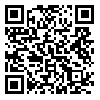BibTeX | RIS | EndNote | Medlars | ProCite | Reference Manager | RefWorks
Send citation to:
URL: http://hayat.tums.ac.ir/article-1-1661-en.html
2- Associate Professor, Dept. of Public Health, School of Public Health, Hamadan University of Medical Sciences, Hamadan, Iran; ,
3- Assistant Professor, Dept. of Public Health, School of Public Health, Hamadan University of Medical Sciences, Hamadan, Iran
4- Associate Professor, Dept. of Biostatistics, School of Public Health, Hamadan University of Medical Sciences, Hamadan, Iran
Background & Aim: Unhealthy snacks consumption has an important role in childhood obesity. The aim of this study was to evaluate the effect of an educational intervention for mothers on the consumption of healthy snacks in children aged 1-5 years using social cognitive theory.
Methods & Materials: This quasi-experimental study was (IRCT2013062912456N2) conducted on 126 mothers who had children 1-5 years old in 2013. The mothers were selected from Hamadan health centers and divided into two groups of intervention and control. The intervention consisted of four sessions, a booklet, a short video, and 6 written messages. The constructs of SCT and food consumption frequency were assessed at baseline, 10 days after the last session and 2-months after the intervention. The data were analyzed by Chi-square test, independent t-test, repeated measures and covariance analysis using SPSS software version 16.
Results: At baseline, the two groups were similar in the demographic characteristics, the constructs of SCT, and unhealthy snacks consumption frequency (P>0.05). Considering that the interaction effects of group and time in the repeated measurement analysis of variance were significant, the means of two groups were compared at each stage using independent t test and significant differences between the two groups were observed at two stages after the intervention.
Conclusion: This intervention had a positive effect on the consumption of healthy snacks. Therefore, SCT and the implemented procedure could be used to develop interventions to modify snack consumption patterns in children.
| Rights and permissions | |
 |
This work is licensed under a Creative Commons Attribution-NonCommercial 4.0 International License. |






